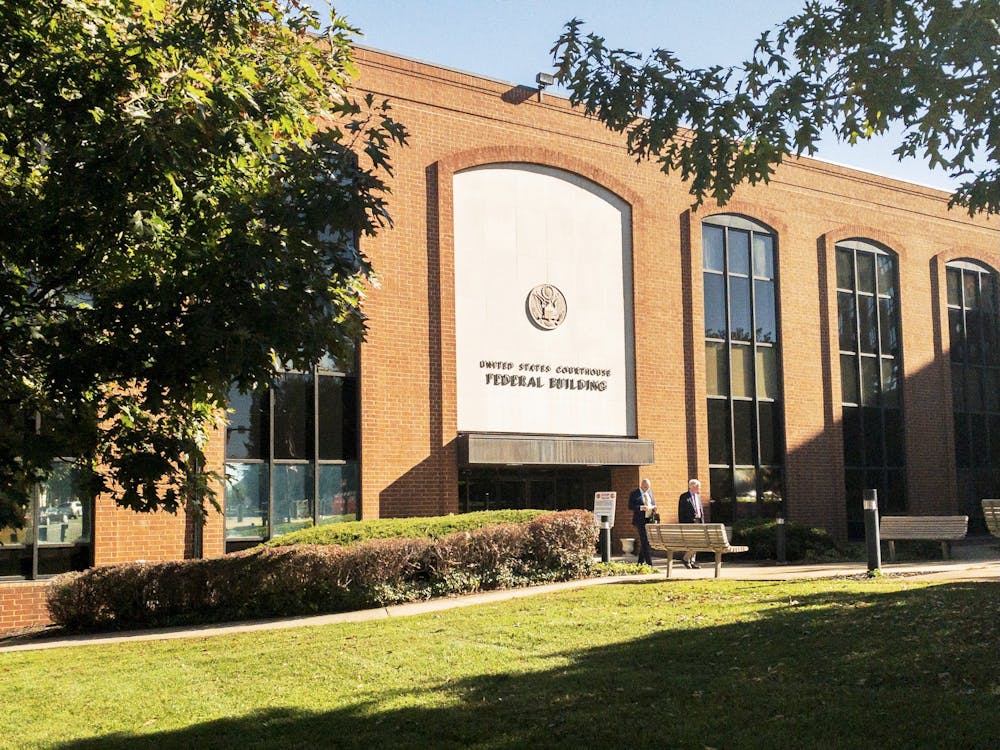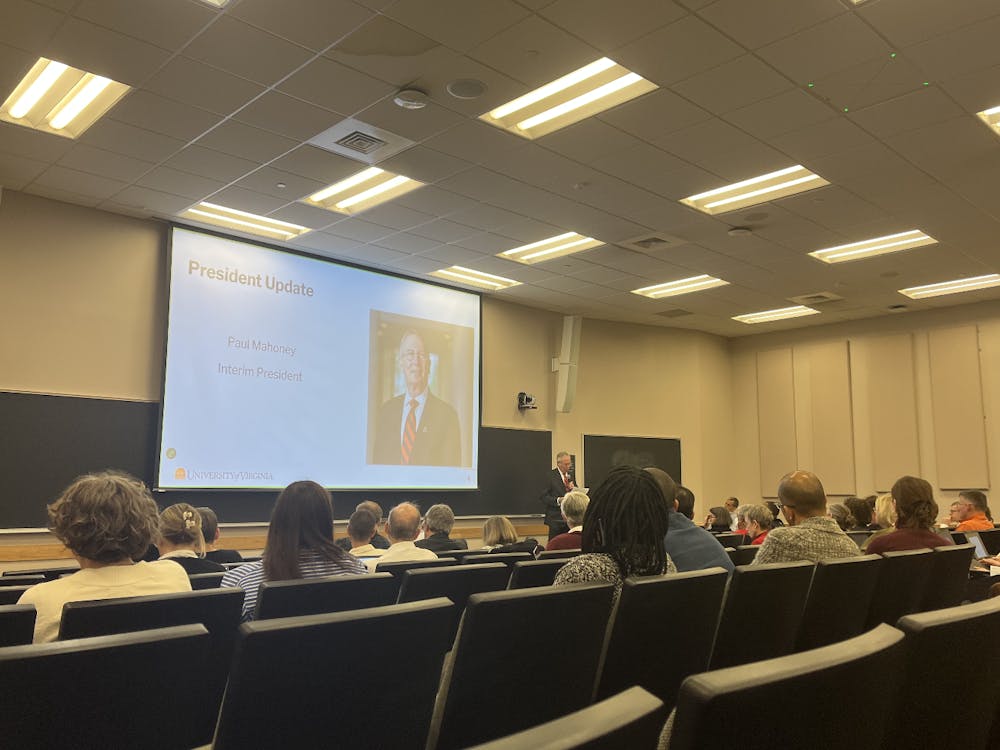The trial of the Unite the Right rally organizers began the morning of Oct. 25 at 9:30 a.m. Plaintiffs in the trial aim to prove that the leaders of the rally conspired to commit racial violence.
There are a number of defendants in the case, including individuals as well as organizations. Richard Spencer, a white nationalist leader who conceived the term “alt-right,” is defending himself during trial. Spencer’s attorney withdrew from the case in June 2020 because his client did not pay outstanding legal fees.
White nationalist podcaster Christopher Cantwell is also representing himself. Alt-right leader Jeff Schoep – along with organizations the National Socialist Movement and the Nationalist Front – are represented by attorney Eddie ReBrook. The National Socialist Movement is a white supremacist organization and is classified as a hate group by the Southern Law Poverty Center, while the Nationalist Front is an umbrella organization of white supremacist groups founded by Schoep.
Matthew Heimbach, the founder of the white nationalist organization the Traditionalist Worker Party — which is also a defendant in this case — and his father-in-law Matthew Parrott are represented by attorney Josh Smith.
Nine Charlottesville and Virginia residents — School of Law alumna Elizabeth Sines, Reverend Seth, Marissa Blair, University library employee Tyler Magill, April Muniz, Dr. Hannah Pearce, Marcus Martin, class of 2020 alumna Natalie Romero, Chelsea Alvarado and an anonymous John Doe — are named as plaintiffs in the case.
Defendants are arguing that the trial is an issue of free speech – even though their speech is “offensive,” it’s protected by the First Amendment. In the U.S., there is no legal category for “hate speech.”
Speech advocating illegal conduct is protected under the First Amendment unless the speech is likely to directly incite violence. The Supreme Court established this difference between advocacy and incitement in 1969 in the case Brandenburg v. Ohio, where Charles Brandenburg gave a hateful speech at a Ku Klux Klan rally in Ohio and alluded to the possibility of revenge. The Supreme Court ruled that Brandenburg’s speech was protected under the First Amendment — it did not directly incite or produce "imminent lawless action."
Testimonies began Friday, Oct. 29 and continued through the second week of trial.
Jury selection
The trial began with jury selection. Each potential juror filled out a questionnaire, which was distributed to the legal teams of the plaintiffs and the defense, that asked questions testing whether the individual can judge the evidence fairly and if they have already formed an opinion about whether a crime was committed.
As each juror was questioned, lawyers from either side were able to ask the judge to consider dismissing the juror because they already had opinions about the trial that would prevent them from being fair. Lawyers for each side also have peremptory challenges, meaning they can dismiss a juror for any reason they choose – however, they cannot dismiss a juror solely because of their race or sex.
The defense used a peremptory challenge to dismiss a Black juror from the pool. In response, plaintiffs argued that the dismissal of the juror was based solely on his race, which Judge Norman Moon dismissed because the defendants said they dismissed the juror because of his demeanor, not his race.
Each side then submitted questions to the judge regarding the jurors’ responses and each juror entered the courtroom one-by-one to answer the questions. Moon asked each potential juror whether they could wear a mask during the proceedings, if the length of the trial would be more of an inconvenience for them than the other potential jurors and whether they had already formed an opinion about who was responsible for the violence at the rally.
Jury selection ran from Oct. 25 through the afternoon of Oct. 27. Per journalist Molly Conger, the jury is made up of four women and eight men. Out of the twelve, four jurors are Black. The demographic breakdown of the rest of the jurors is unknown.
Jury selection in a highly politicized case such as this often takes a long time because it is difficult to find potential jurors with no pre-existing opinions.
Due to the pandemic, entry into the courtroom was limited to litigants, attorneys, jurors, witnesses, court staff and security. Members of the press who are granted courthouse press credentials can watch a live video feed of the trial from another room in the courthouse. The public is limited to listening to a live audio feed, which typically has between 200 and 400 listeners. To access the live audio feed, individuals can call into the phone number of Judge Moon’s courtroom.
Opening statements
Opening statements began the morning of Oct. 28. Moon began the proceedings by explaining the legal definition of conspiracy — an agreement between two or more people to commit a crime. Moon also explained that in a civil trial, it is the responsibility of the plaintiff to prove that there is a preponderance of the evidence that a crime was committed — this means the evidence suggests that there is more than a 50 percent chance that a crime was committed.
Karen Dunn, an attorney for the plaintiffs, opened up their opening statement by showing a video clip of protesters marching through Grounds Aug. 11 and shouting “Jews will not replace us.” Dunn said that this case was not a question of free speech, and that there was nothing illegal about protestors organizing a rally — instead, Dunn said, the case is about bringing justice and accountability to alt-right leaders who planned violence.
“The defendants planned for violence, executed the violence and celebrated the violence,” Dunn said.
The opening statements for the defense argued that no conspiracy was committed by the organizers of the rally. Attorney James Kolenich, who represents defendants Jason Kessler, Nathan Damigo and white nationalist organization Identity Evropa, blamed the violence on the Charlottesville Police Department, who he said was unable to keep order.
“The community blames the police for this event,” Kolenich said.
In Dec. 2017, former U.S. Attorney General Timothy Heaphy released the results of an investigation that concluded CPD failed to prepare for the rally.
During his statement, Spencer said he was invited to the rally by organizers and was not involved in planning it. He said he was excited to make a speech to crowds of his supporters.
“I was excited to feel like a star,” Spencer said.
Spencer also said to the jury that he thinks their decision is about looking fairly at the facts and not personal opinions.
“Deciding on my behalf says absolutely nothing [about the jurors’] personal beliefs,” Spencer said.
ReBrook then argued that it would be better to keep Neo-Nazis organizations in the open than push them underground by finding them guilty in this case — in other words, finding the defendants guilty of conspiracy would push the organizations to hide their activities from law enforcement, which would make the organizations more unpredictable and dangerous than if their activities were more visible.
“You must ask yourself, where will they be more dangerous?” Rebrook said.
“Democracy in Danger” podcast contextualizes trial
On Monday, Media Studies Prof. Siva Vaidhyanathan and History Prof. Will Hitchcock recorded a live episode of the Democracy in Danger podcast from Nau Hall — the podcast episode is about the Sines v. Kessler trial and the role the media played during the Unite the Right rally.
The podcast was created in 2020 by the Deliberative Media Lab, which seeks to analyze how social media impacts democracy. The lab is affiliated with the Democracy Initiative, a program run by the College of Arts and Sciences and Miller Center which focuses on interdisciplinary study of democracy around the world.
Two guest speakers were featured on this episode — the first was Jessie Daniels, professor of sociology at City University of New York Hunter College and Media Studies Prof. Aniko Bodroghkozy.
Vaidhyanathan opened the podcast with a collection of soundbites from protestors, reporters and counter-protestors at the Unite the Right rally.
“We are here today precisely to do that work of thinking back on that moment when white nationalists and Neo-Nazis brought violence and mayhem to our city and to make sense, especially of the media ecosystem that, frankly, enabled them.” Hitchcock said.
Bodroghkozy tanalyzed how civil rights activists of the 1960s engaged in protests they expected to result in violence and used the resulting graphic images to bring media attention to their cause. Civil rights activists, Bodroghkozy said, needed to have white supremacists acting violently on camera so the country knew what was happening.
According to Bodroghkozy, similar motivations drove the “alt-right”, who entered the 2017 rally knowing violence would occur and that the violence would bring their movement out of the shadows of the Internet. Bodroghkozy noted that while there is a connection between the two movements in how they each created the conditions for violent confrontation that mass media could pick up on and broadcast to the nation, the goals of either group could not be more different.
“[The alt-right] needed a stage set, they needed to bring media attention to this movement that they were building,” she said. “But the flip of the script is that everything that the Civil Rights Movement stood for, here we have this new movement that is going to take that all away.”
The conversation then moved to Daniels’ research on how racism manifests on the Internet. Daniels used the term “innovation opportunists” to describe how white supremacist groups use technological changes — such as social media — to further their cause by gaining traction for their movement.
“White supremacists have seen an opportunity in the innovation of social media in that these platforms — and also the cable news stations — they solve for outrage,” Daniels said. “They make more money when people are outraged.”
In the final moments of the podcast, speakers analyzed accountability and consequences in the context of the two events. Daniels was not optimistic about the orchestrators of these events facing major consequences, while Bodroghkozy said the bravery of the plaintiffs in Sines v. Kessler is encouraging, but that the consequences from the trial — which remain to be seen — will play a role in the future of white supremacy.
“If they do not suffer major legal consequences, that's a loss for the anti white supremacy cause,” Bodroghkozy said.
CORRECTION: A previous version of this article incorrectly stated that the Supreme Court ruled against Brandenburg in Brandenburg v. Ohio. The article has been updated to reflect the correct ruling.







